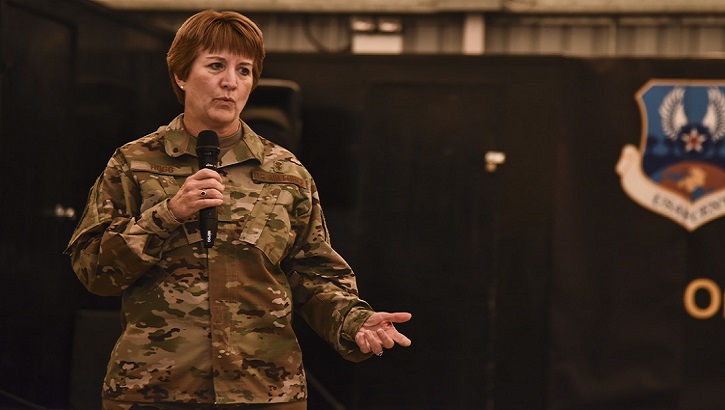
The Air Force takes steps to assure ‘unblinking’ operations, readiness and capabilities amid pandemic

Air Force medics and health personnel around the globe are resolutely following and ensuring compliance with guidelines issued by the Department of Defense and Centers for Disease Control and Prevention according to Air Force Lt. Gen. Dorothy Hogg.
How do you stand “shoulder to shoulder” in a time of COVID-19? For the United States Air and Space Forces, and indeed the entire United States military, this is no small question. It is so pressing, in fact, that the Air Force’s medical staff, in collaboration with experts nationwide, have been working nearly around the clock to answer it.
It’s not hard to understand why.
The critical responsibilities and missions of our 685,000 total force active duty Guard and Reserve Airmen do not fade even during a pandemic. Across a worldwide enterprise, our Airmen must remain healthy so they can maintain full readiness and the capability to protect our nation’s security and interests.
Achieving those goals often demands Airmen work literally “shoulder to shoulder” in tight spaces over long hours. You can find it with crews aboard our aircraft, maintenance personnel on the ground, analysts at remote radar stations, recruits at training centers, and of course, at every Air Force barracks. Even within the sprawling Pentagon, thousands of active duty and civilian staff work in tightly bunched cubicles.
With the coronavirus’s arrival, those arrangements must be modified to ensure not only the health and safety of all personnel but to assure the Air Force’s unblinking ability to complete all missions.
Air Force medics and health personnel around the globe are resolutely following and ensuring compliance with guidelines issued by the Department of Defense and Centers for Disease Control and Prevention. It’s why leaders at each of our bases are working closely with local public health officials to actively monitor the health of Airmen and their families, as well as to monitor those who have been stricken by COVID-19. By now, most Americans know that safety demands maintaining a social distance beyond which the virus can spread. It means being alert to symptoms including low-grade fever, respiratory distress and body aches.
To slow the spread of the coronavirus, DoD has enacted travel restrictions, including the halt of domestic travel for service members. The goal is to “flatten the disease curve” by slowing the spread of the virus and preventing medical systems from being overwhelmed.
Within the Air Force, our medics are executing all available measures to mitigate the spread of COVID-19 in accordance with CDC and force health protection guidelines, and remain aligned with state and local public health organizations.
It demands ingenuity and flexibility. In Europe and Asia, where the outbreak has been severe, we have adjusted health procedures to account for the threat and continue to safely fly fighter and bomber missions to deter aggression. And across the globe, our airlift forces have continued their missions apace, refueling U.S. aircraft and delivering vital cargo. It is in the best tradition of our service, echoing the work of those who flew during the Berlin Airlift and other global crises.
We are reminding – and reminding again – commanders and senior non-commissioned officers about best practices such as avoiding contact with those who are sick, washing your hands for at least 20 seconds, and disinfecting frequently touched objects and surfaces.
Our Airmen have always displayed such agility, adaptability and resiliency.
Although it is easy to forget the military’s long history in the fight against infectious diseases, that history informs our actions and decisions today. The Office of Malaria Control in War Areas was established in 1942 and charged with protecting soldiers from malaria and other vector-borne diseases, such as typhus. It is the direct forbearer of the Centers for Disease Control and Prevention.
It’s worth remembering, especially now, that military physicians and researchers played important roles in developing vaccines against smallpox, yellow fever, influenza and typhoid.
We do not yet know how COVID-19 will evolve, how many Americans will be infected or die. What we do know is that the Air Force will take the actions necessary to protect our Airmen while also protecting the nation.





















.png)









No hay comentarios:
Publicar un comentario